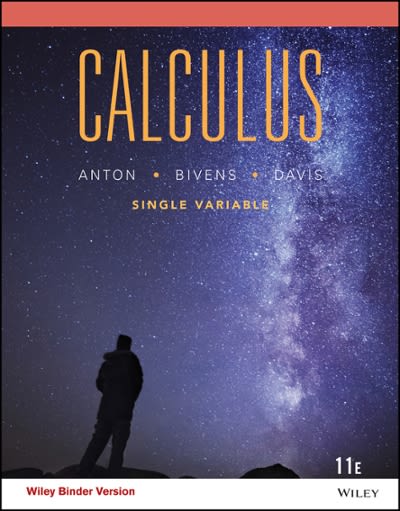Question
The researcher is interested in if the encoding condition has a significant effect on memory. In encoding condition A, subjects are asked to name the



The researcher is interested in if the encoding condition has a significant effect on memory. In encoding condition A, subjects are asked to name the object; in encoding condition B, subjects are asked to name the color of the drawings. Afterwards all subjects are tested on their memory. Each selected subject is randomly assigned to either encoding condition A or encoding condition B.
The researcher hypothesized that condition A (object naming) would lead to significantly better memory compared to condition B (color naming), and she sets the significance level at ? = .01 for a one-tailed test.
Hint: each subject is tested in BOTH condition A and condition B, while each subject here is tested in only ONE condition (either A or B).
| Subject ID | Encoding A | Subject ID | Encoding B | |
| 1 | 77 | 13 | 88 | |
| 2 | 80 | 14 | 83 | |
| 3 | 93 | 15 | 81 | |
| 4 | 78 | 16 | 77 | |
| 5 | 90 | 17 | 91 | |
| 6 | 85 | 18 | 90 | |
| 7 | 91 | 19 | 86 | |
| 8 | 87 | 20 | 76 | |
| 9 | 91 | 21 | 88 | |
| 10 | 90 | 22 | 74 | |
| 11 | 86 | 23 | 79 | |
| 12 | 94 | 24 | 89 |
1. Calculate all three df1, df2, and dftotal
Total Degrees of Freedom: Dftotal = df1 + df2
2. For the one-tailed test, find the critical t values for this hypothesis test based on the total degree of freedom (from question above), and the preset alpha level.
Total degree of freedom=
Since this is a directional test it is a one-tailed test
Level of significance = 0.05
Look on T chart
3. Compare the calculated tstatistic with the critical tvalue by stating which is more "extreme", and then draw a conclusion about the hypothesis test by stating clearly "reject" or "fail to reject" the null hypothesis.
Q1L. Effect Size -
4. Calculate the pooled standard deviation for the populations (use the pooled variance calculated in question f)
Pooled standard deviation for the population
Pooled Standard Deviation: Spooled^2 =? Spooled
Spooled2? 2.6602
5. Calculate the standardized effect size of this test.
The standardized effect size of the test =
d= (M-m)/s *Sample Mean =M *Population Mean =m *Effect size =d *Estimated Population Standard Deviation =s
6. Draw a conclusion based on the hypothesis test result and the effect size. In other words, did encoding condition have a significant effect on memory score?
7. Was the effect small, medium, or large?
explain why?
T CHARTS





Step by Step Solution
There are 3 Steps involved in it
Step: 1

Get Instant Access to Expert-Tailored Solutions
See step-by-step solutions with expert insights and AI powered tools for academic success
Step: 2

Step: 3

Ace Your Homework with AI
Get the answers you need in no time with our AI-driven, step-by-step assistance
Get Started


